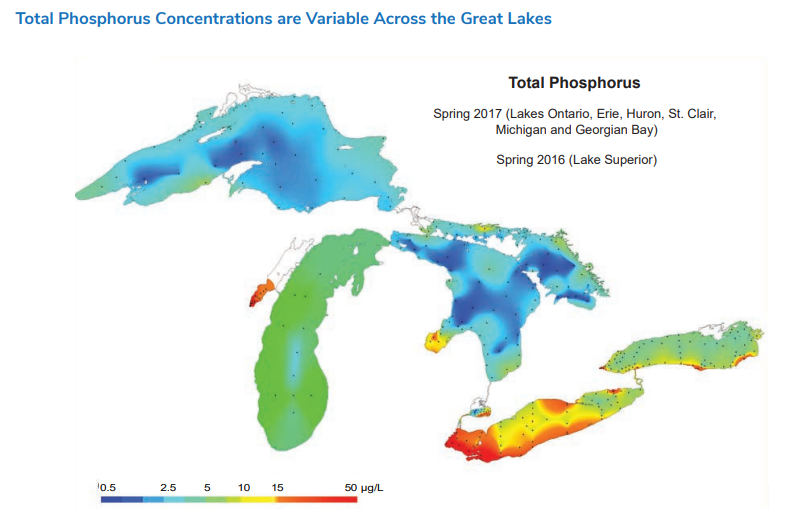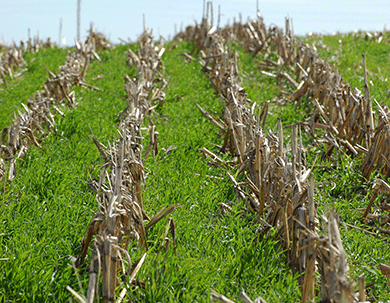In Southern Ontario, we have something uniquely special. No, I am not talking about the kind of ‘specialness’ (or self-absorption, take your pick) that the rest of the country likes to tease us about. I am talking about the Great Lakes. One of the largest freshwater resources on the planet, the Great Lakes makes up over 80% of all freshwater in North America. Beyond astonishing statistics, the Great Lakes are deeply embedded in our cultural, economic, and environmental identities. Serving a $7 billion a year international fishing industry which supports 75,000 jobs, they are also important for energy production, agriculture and are a vital drinking water source to millions of Canadians and Americans. Perhaps most importantly, the Great Lakes reveal a rich historical connection to Indigenous groups like the Ojibwe and Huron.
As a nation, we intrinsically realize something so special deserves our utmost respect and protection. And yet, while groups like conservation authorities exist for this very purpose, the Great Lakes are under stress. In Lake Erie specifically, high nutrient levels have contributed to toxic levels of cyanobacteria. This bacterium is responsible for the algal blooms us Ontarians have experienced during summers in recent years – and continuing this summer. These blooms can impact our drinking water, cause skin rashes, gastrointestinal upsets, and cripple the food webs and ecosystem interactions within the lake.
Recognizing a problem looming on the horizon, Canada and the United States co-signed The Great Lakes Water Quality Agreement in 1972. Today, both governing bodies and external agencies work together to assess the health of the Great Lakes using nine indicators, one of which is nutrients and algae. Phosphorus, a subcategory for this indicator, is one of the most common nutrients responsible for the growth of primary producers such as algae. The 2019 Assessments of the Nine Great Lakes Indicators of Ecosystem Health rated nutrients and algae in the Great Lakes system as a whole as “fair, unchanging.”
While most of the Great Lakes remain at a “good” or “fair” status, phosphorus loading and water quality remain problematic in Lake Erie. This is partially due to Erie’s shallow basin, allowing the lake to warm quickly in the summer triggering algal growth, and the intensive farming and dense populations which surround the area. According to the 2018 Watershed Report Card prepared by the Kettle Creek Conservation Authority, surface water quality was listed at a D grade, or poor.

SOURCE: 2019 Assessments of the Nine Great Lakes Indicators of Ecosystem Health, Prepared by Fisheries and Oceans Canada (DFO)U.S. Environmental Protection Agency (US EPA)
At the surface level this problem may seem like a biological issue, however, it is equally an issue of governance. Nutrients like phosphorus often enter Lake Erie through the rivers and streams within the watersheds that make up the Great Lakes basin. The Lake Erie drainage basin is comprised of numerous watersheds governed by different municipalities and states/provinces on both the American (Indiana, Michigan, Ohio, Pennsylvania, and New York) and Canadian (Ontario) sides of the border. On the Canadian side alone, 36 different conservation authorities must work together to try and manage provincial water quality.
The Kettle Creek Conservation Authority (KCCA) has been closely monitoring phosphorus levels entering the Lake Erie basin. Jennifer Dow from KCCA told Alternatives Journal, “Monitoring phosphorus in surface water throughout the Kettle Creek watershed is a major component of the Watershed Report Card process. In 2018, all 36 conservation authorities, including those located in the Lake Erie basin released watershed report cards. A watershed report card evaluates key indicators of watershed health, using provincial standards of defensible science-based research. KCCA releases a new report card every five years to provide local residents, community groups, municipalities, industries and agencies information on the health of the watershed.”
In addition to water quality reports, KCCA increases awareness on water quality issues in their community and holds a variety of clean water programs and initiatives. “KCCA also works with farmers, landowners and municipalities to undertake environmental stewardship projects on their properties including wetland creation, erosion control and planting of tallgrass prairie,” says Dow.

SOURCE: 2019 Assessments of the Nine Great Lakes Indicators of Ecosystem Health, Prepared by Fisheries and Oceans Canada (DFO)U.S. Environmental Protection Agency (US EPA)
The Great Lakes Water Quality Agreement was amended most recently in 2012, where Canada and the US both agreed to reduce phosphorus entering Lake Erie by 40%. One of the ways to do this is by increasing fertilizer efficiency and reducing runoff on farms. Nutrients enter Lake Erie through many point and non point sources, one of the most infamous being from fertilizer runoff used for agriculture (chemical fertilizers and animal manure).
The International Joint Commission released a report in 2014 in which they claimed farmers are largely to blame for this problem. When nutrients are not utilized by the plants, they can be lost and runoff into the watershed during rainfall events or by leaching into the groundwater over time- eventually entering Lake Erie. According to CBC, farms have become larger and more intensive over the last few decades, resulting in elevated applications of fertilizers, more livestock farming, and an increase in corn crop (which is known to be fertilizer intensive).
Farmers play an especially important role in protecting the balance of the natural ecosystem. As Marty Vermey, Senior Agronomist at the Grain Farmers of Ontario says, “Farmers are in a unique position within society; they have vested interest in the natural environment as their livelihood depends on it.”
“Farmers are in a unique position within society; they have vested interest in the natural environment as their livelihood depends on it.” -Marty Vermey, Senior Agronomist at the Grain Farmers of Ontario
He continued, “A farmer plays a significant role in the managing and balancing of these ecosystems to provide service to not only the productivity of the farm, but also broader societal ecosystem services. The balance of our ecosystem is dependent on all people in society, from the residents and what they pour down their drains, to consumers who throw away unused food or allow food waste to occur, to manufacturers in how they consume raw goods and process unused by-products. Everyone has a role to play in protecting the ecosystem.”
While algal blooms in Lake Erie are partially due to agriculture runoff, farmers are not the sole contributor to the problem. “Phosphorus can come from a variety of sources,” Dow explained, “including effluent from sewage treatment plants, surface runoff from agricultural, urban and suburban lands, livestock operations, industrial sources such as power plants and vehicle exhaust. Phosphorus can be found in fertilizers, pesticides, landfill effluent, septic systems and fecal matter.”
In the Kettle Creek watershed, Dow stated that the main anthropogenic sources of phosphorus include, “Domestic and industrial effluents (soaps, cleaning products) and urban and agricultural inputs (fertilizers, pesticides).”
Recognizing themselves to be a contributing factor to this problem, farmers follow the 4R Nutrient Stewardship Strategy in crop stewardship to manage nutrient runoff and optimize fertilizer efficiency. Vermey describes the 4R principles as, “the right product, at the right rate, with the right application method, at the right time.” Additionally, Vermey says farmers can manage nutrients entering the waterways by “using grass waterways, cover crops and physical structures to help slow the movement of fast flowing water. Also, the establishment of healthy crops aids in the canopy growth which helps to slow down the water flow and allows the rain to be absorbed by plants and soil.”

Cover crops can reduce the loss of nutrients like phosphorus into the waterways
SOURCE: Iowa State University
While algal blooms in Lake Erie are partially due to agriculture runoff, farmers are not the sole contributor to the problem.
Nutrient application to crops is a necessary step to grow the food we eat. “If farmers do not use the required nutrients to balance the soil chemistry,” Vermey says, “the crop will be more susceptible to insect and disease damage as plants would be unthrifty and unable to compete with the environmental concerns placed on the plant.”
Despite farmers using best management practices to reduce nutrient runoff, many environmentalists claim this is not enough. Environmental defense recently stated that we are not doing enough on the Canadian side of the border to prevent phosphorus runoff. They stated that last June, “Ontario Premier Doug Ford, Michigan Governor Gretchen Whitmer, and Ohio Governor Mike DeWine re-committed to meeting a 40 per cent reduction of phosphorus in Lake Erie by 2025 and an interim phosphorus reduction target of 20 per cent by 2020.” At the time of writing this article, we have not yet met these reduction targets.
“Algae blooms are preventable. Reducing the amount of runoff pollution will significantly reduce Lake Erie algae blooms and improve the lake’s health.” – Jennifer Dow, Kettle Creek Conservation Authority (KCCA)
Unless we get serious about meeting the 40% reduction target, this problem will only worsen in size and severity. As a result of climate change, water is warming and we are witnessing an increased frequency of rainfall events. “Over the last five years,” says Dow, “97.9% of the phosphorus samples collected across the Kettle Creek watershed exceeded the Provincial Water Quality Objective (PWQO)… Algae blooms are preventable. Reducing the amount of runoff pollution will significantly reduce Lake Erie algae blooms and improve the lake’s health.”
Unfortunately, the solutions to this problem are complex in their multi-jurisdictional nature. Just in terms of phosphorus management on a farm, each farm varies in size, soil composition, rainfall… and thus solutions will vary. Meanwhile, farmers face their own economic pressures, with no choice but to rely on fertilizer to deliver a good crop and secure their livelihoods. We shouldn’t have to choose between one or the other.













